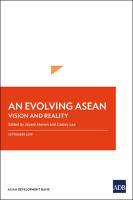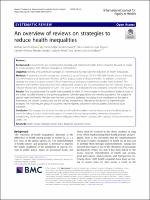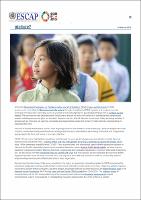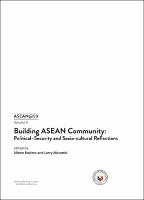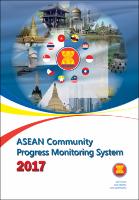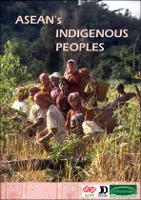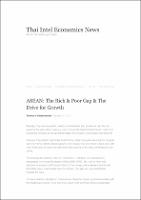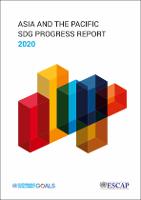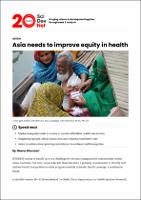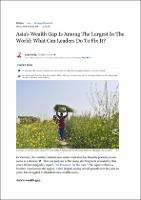Browsing by Title
Now showing items 21-40 of 299
-
An Evolving ASEAN: Vision and Reality
(Asian Development Bank, 2019)
The formation of ASEAN in 1967 was originally driven by political and security concerns. In the decades that followed, ASEAN’s scope evolved to include an ambitious and progressive economic agenda. In December 2015, the ASEAN Economic Community (AEC) was formally launched. Although AEC has enjoyed some notable successes, its vision of economic integration has yet to be fully realized. The publication reviews the evolution of ASEAN economic integration and assesses the major achievements. It also examines the challenges that have emerged during ... -
An overview of reviews on strategies to reduce health inequalities
(2020-12)
Background: Governments are incentivized to develop and implement health action programs focused on equity to ensure progress with effective strategies or interventions. Objective: Identify and synthesize strategies or interventions that facilitate the reduction of health inequalities. Methods: A systematic search strategy was carried out up until August 2019 in MEDLINE (Ovid), Embase (Elsevier), Cochrane Database of Systematic Reviews, LILACS, Scopus, Scielo and Epistemonikos. In addition, a snowball strategy was used. Literature reviews (LRs) ... -
And the Word of the Year Is… “Resilience”
(2020-12-05) -
Are we REALLY getting everyone into the picture?
(2021-03-26) -
ASEAN @50Volume 4: Building ASEAN Community: Political-Security and Socio-cultural Reflections
(ERIA, 2017)
ASEAN has gradually built, on the basis of both shared interests and common principles and norms, various practices and mechanisms that helped prevent conflict among its members and allowed it to play an autonomous role in shaping the regional security architecture. Overcoming the member states' preoccupation with their own national concerns to give way to advocacy of collective interests has remained difficult, but progress is being made. Part A of this volume looks at the processes and dynamics, challenges, and opportunities of ASEAN ... -
ASEAN Community Progress Monitoring System 2017
(The ASEAN Secretariat, 2017) -
ASEAN Economic Progress 1967-2017 (leaflet)
(The ASEAN Secretariat, 2017) -
ASEAN Key Figures 2019
(The ASEAN Secretariat, 2019) -
ASEAN Social Progress 1967-2017(Leaflet)
(The ASEAN Secretariat, 2017) -
ASEAN statistical report on millennium development goals 2017.
(The ASEAN Secretariat, 2017) -
ASEAN's Indigenous Peoples
(AIPP,IWGIA,FORUM-ASIA, 2010)
Indigenous Peoples are not at all mentioned or referred to in any ASEAN document, even though they are an integral part of the ASEAN Community and among its most vulnerable sectors, whose interest the ASEAN has committed itself to protect. The failure of the ASEAN to address the plight of its Indigenous Peoples despite its expressed commitment to human rights and social justice is a shortcoming that needs to be corrected urgently. Unless Indigenous Peoples are fully recognized as integral part of a culturally diverse ASEAN, and unless Indigenous ... -
ASEAN: The Rich & Poor Gap & The Drive for Growth
(2014-02-17) -
Asia and the Pacific SDG progress report 2020.
(United Nation, 2020)
This report analyses trends as well as data availability for monitoring progress toward the Sustainable Development Goals (SDGs) in Asia and the Pacific and its five subregions. It assesses gaps which must be closed to achieve the goals by 2030. This assessment is designed to ensure the region’s actions remain on target, shortcomings are addressed as they arise, and all interested parties remain engaged. It is an invaluable resource for all stakeholders involved in prioritization, planning, implementation and follow-up of the 2030 Agenda for ... -
Association between mental health and executive dysfunction and the moderating effect of urban–rural subpopulation in general adolescents from Shangrao, China: a population-based cross-sectional study
(2022-08-23)
Objectives: To examine the association between mental health and executive dysfunction in general adolescents, and to identify whether home residence and school location would moderate that association. Design: A population-based cross-sectional study. Setting: A subsample of the Shanghai Children’s Health, Education, and Lifestyle Evaluation-Adolescents project. 16 sampled schools in Shangrao city located in downstream Yangtze River in southeast China (December 2018). Participants: 1895 adolescents (48.8% male) which were divided into ... -
Associations between structures and resources of primary care at the district level and health outcomes: a case study of diabetes mellitus care in Thailand
(2018-10-26)
Background: The structural factors of primary care potentially influence its performance and quality. This study investigated the association between structural factors, including available primary care resources and health outcomes, by using diabetes-related ambulatory care sensitive conditions hospitalizations under the Universal Coverage Scheme in Thailand. Methods: A 2-year panel study used secondary data compiled at the district level. Administrative claim data from 838 districts during the 2014–2015 fiscal years from the National Health ... -
Associations between the stringency of COVID-19 containment policies and health service disruptions in 10 countries
(2023-04-12)
Background: Disruptions in essential health services during the COVID-19 pandemic have been reported in several countries. Yet, patterns in health service disruption according to country responses remain unclear. In this paper, we investigate associations between the stringency of COVID-19 containment policies and disruptions in 31 health services in 10 low- middle- and high-income countries in 2020. Methods: Using routine health information systems and administrative data from 10 countries (Chile, Ethiopia, Ghana, Haiti, Lao People’s Democratic ... -
Balancing Reproductive and Productive Responsibilities: Childcare Strategies Implemented by Migrant Mothers in the Thailand–Myanmar Border Region
(2021-12-17)
Background: In Myanmar, formerly known as Burma, conflicts between ethnic minorities, the government, and the military have been ongoing for decades. Enduring unrest has caused thousands to flee to the region around Mae Sot, a city on Thailand’s western border. Women around the world assume a combination of reproductive and productive responsibilities, and during situations of armed conflict and displacement, conditions for women often worsen. This study investigated the parenting experiences of female migrants from Myanmar living in protracted ...

